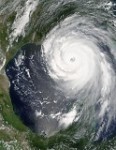Information contained in this publication is intended for informational purposes only and does not constitute legal advice or opinion, nor is it a substitute for the professional judgment of an attorney.
 To further assist employees affected by Hurricane Sandy, the Internal Revenue Service (IRS) has announced that it is easing procedural and administrative rules to allow 401(k)s and similar employer-sponsored retirement plans to more readily make loans and hardship distributions to employees and their family members who live or work in a designated disaster area. Ordinarily, laws regarding qualified employer plans impose a number of restrictions on providing loans and distributions from those plans. For example, a pension plan hardship distribution is generally included in an employee’s gross income and subject to a 10% early withdrawal tax. As more fully discussed in IRS Announcement 2012-44, (pdf) the agency is relaxing these rules in order to make emergency funds more accessible to storm victims.
To further assist employees affected by Hurricane Sandy, the Internal Revenue Service (IRS) has announced that it is easing procedural and administrative rules to allow 401(k)s and similar employer-sponsored retirement plans to more readily make loans and hardship distributions to employees and their family members who live or work in a designated disaster area. Ordinarily, laws regarding qualified employer plans impose a number of restrictions on providing loans and distributions from those plans. For example, a pension plan hardship distribution is generally included in an employee’s gross income and subject to a 10% early withdrawal tax. As more fully discussed in IRS Announcement 2012-44, (pdf) the agency is relaxing these rules in order to make emergency funds more accessible to storm victims.
Specifically, qualified employer plans – including 401(k) plans, 403(b) tax-sheltered annuities, and 457(b) deferred-compensation plans –
will not be treated as failing to satisfy any requirement under the Code or regulations merely because the plan makes a loan, or a hardship distribution for a need arising from Hurricane Sandy . . . any hardship arising from Hurricane Sandy is treated as an "unforeseeable emergency" for purposes of distributions from such plans. For example, a profit-sharing or stock bonus plan that currently does not provide for hardship or other in-service distributions may nevertheless make Sandy-related hardship distributions pursuant to this announcement, except from QNEC [qualified non-elective contribution] or QMAC [qualified matching contribution] accounts or from earnings on elective contributions.
Therefore, it will be easier for employees affected by the super storm to take a hardship distribution or borrow up to the specified statutory limits from their qualified retirement plans. Employees who do not live or work in an affected area will also be allowed to use these funds to assist certain family members who do live in an affected area. Current loan and distribution rules will be relaxed to allow plans to make such loans or distributions before the plan is formally amended to reflect these changes. The IRS is also temporarily waiving the limits that normally apply to hardship distributions, and lifting the six-month ban on 401(k) and 403(b) contributions that normally affects employees who take hardship distributions. The hardship withdrawals must be taken by February 1, 2013.
This temporary tax-related amnesty is the latest in a series of storm-related employment tax breaks that the IRS has granted in recent weeks. Earlier this month the IRS revealed plans to encourage employee leave donation. As discussed in the agency’s announcement, employees are now able to donate their vacation, sick or personal leave in exchange for employer cash payments made to qualified tax-exempt organizations that provide to relief to storm victims. Employers, in turn, “can forgo leave in exchange for employer cash payments made before Jan. 1, 2014. Under this special relief, the donated leave will not be included in the income or wages of the employees. Employers will be permitted to deduct the amount of the cash payment.” Additional information on this tax break is provided in IRS Notice 2012-69. (pdf)
Immediately following the storm the IRS extended a handful of filing deadlines for individuals and employers impacted by Sandy, and allowed qualified disaster relief payments made to individuals by their employer can be excluded from those individuals’ taxable income.
A complete list of IRS-related tax relief efforts can be found here. Additional compliance guidance for employee benefit plans in wake of Hurricane Sandy can be found here.

